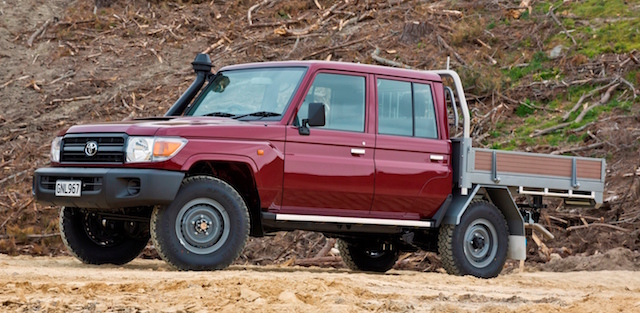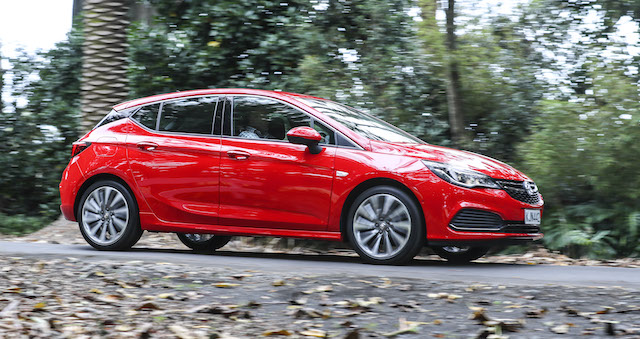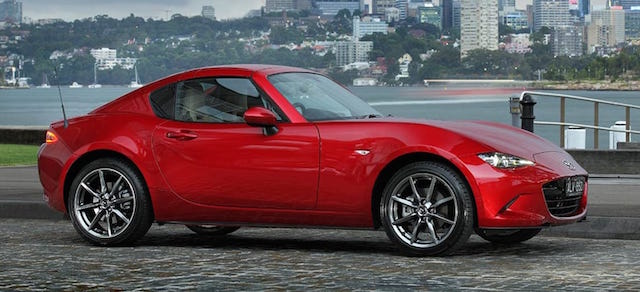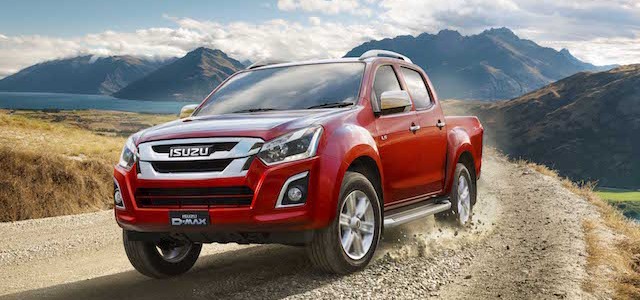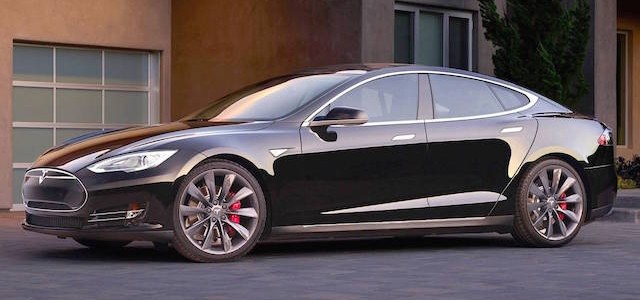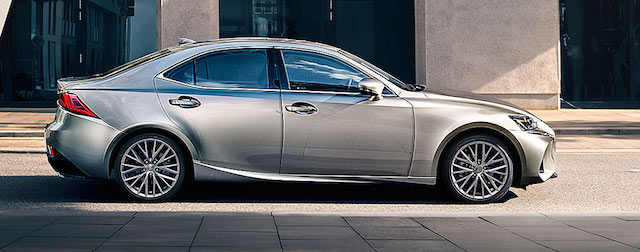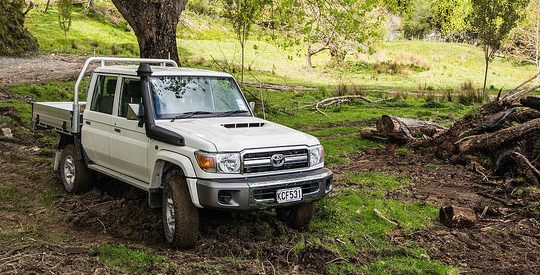
I didn’t drive all the cars that figured in the numerous car of the year awards in New Zealand late last year, but the ones that left a lasting impression are listed here.
They are opinions, that’s all. Like Dirty Harry, aka Clint Eastwood, said, “Everybody’s got one.” Of course he wasn’t just talking about opinions.
Elon Musk didn’t invent the EV, but he can be credited with popularising zero-emission transport and the supply of renewable energy.
Douglas Adams’ book, The Hitchhiker’s Guide to the Galaxy, was a turning point in Musk’s teenage education.
The book is about aliens destroying Earth to make way for a galactic highway. Musk began to see man’s fate in the galaxy as his personal obligation. At age 17, he emigrated from South Africa to Canada, on his own.
Musk is of course the man behind space travel ventures and Tesla electric cars. He slipped at least one reference to the Hitchhiker’s book into the computer software of the Tesla Model S sedan, which launched in New Zealand last March.
I drove the Model S for 1200km through Sweden and Norway last July. It was an experience that shaped my choice of the battery-electric Hyundai Ioniq as my 2017 Car of the Year, in that it opened all manner of doors into the future of feel-good simplicity of EVs. See: Feel-good simplicity of EVs: Hyundai Ioniq is Car of Year
In no particular order, here are the vehicles that had something special about them. Some models were new, some upgraded …
Toyota Land Cruiser 79 Series Double-Cab: In 2012, Aussie mining companies said they would thereafter only buy fleet vehicles that had a five-star ANCAP safety rating. That ruled out the then four-star 70-Series. But the mining men soon realised that a five-star, medium-duty one-tonner like the Hilux was not a suitable replacement. They hounded Toyota to upgrade the 70-Series. After four years and 100,000km of development tests, only one got five stars: the single-cab/chassis. The double-cab (above and at top) and wagon are still rated four stars but both have benefited from fleet upgrades: reversing camera, traction control, stability control, hill start control, dual automatic locking hubs with a manual-locking function, a 7% taller second gear and 15% taller fifth-gear for more relaxed open-road driving and thriftier fuel use from its 130-litre fuel tank. The 4.5-litre turbo-diesel V8 gets improved fuel injectors and its exhaust system gets a particulate filter to cut soot emissions. The Euro5 engine delivers 151kW at 3400rpm and 430Nm between 1200-3200rpm and drives the rear wheels via a five-speed manual gearbox. There’s selectable 4WD and locking front and rear differentials. The 79 Double-Cab is a big critter, but it’s easy to place on the open road and hugely capable off it. It’s the best four-door workhorse going, with a maximum payload of 1235kg and towing capacity of 3500kg. The single-cab, double-cab, and wagon are priced between $75,780-$84,980.
Subaru XV: There is a lot to like about the second-generation SUV: the slightly longer wheelbase, more adjustable seating up front, design and layout of the generous cabin, intuitive controls, integrated Eyesight safety system with autonomous braking, a long-travel, easy-going ride that remains balanced and composed when pushed, well-weighed steering, AWD traction. Another plus is its ground clearance of 220mm, a higher ride height which, on paper at least, could be expected to affect dynamics. But the chassis doesn’t give anything away. Ride and handling is a class leader. XV is helped off-road by its X-Drive mode: it takes electronic control of the engine, continuously variable transmission (CVT), brakes, vehicle dynamics, and locks the centre differential to split torque 50:50 front/rear. Output from the naturally aspirated 2.0-litre boxer four-cylinder is modest – 115kW at 6000rpm and a peak of 196Nm at 4000rpm. But the long-stroke engine delivers much of the torque from lower down in the rev range, aiding get up and go via a seven-step CVT that is largely flare-free. Shift paddles are there to help if the revs occasionally slide into a hole. There are two new XV models: the entry-level XV 2.0i Sport at $34,990, and the XV 2.0i Premium at $39,990. Both models are particularly well equipped, with up-to-the-minute safety aids, and Apple CarPlay and Android Auto.
Holden Astra: Holden’s best ever mainstream hatchback. The five-star, five-door Astra is available in six variants (R, RS, RS-V) with two turbocharged petrol engine options: sweet-revving 1.4- and 1.6-litre units mated to either six-speed manual or six-speed automatic gearboxes. The entry-level R is the only variant to use a new all-aluminium 1.4 engine, good for 110kW/240Nm. The RS and RS-V get the 1.6-litre unit, which delivers 147kW/300Nm. There’s a lot to like about the Astra and its powertrains. The cabin is a comfortable, refined layout, which, for a small car, does a good job of toning down road noise. Steering is every-which-way adjustable; passenger room in the rear is pretty good; boot space is adequate. The highlight is the way Astra rides and handles. It’s around 160kg lighter than the car it replaces and the cut in weight, combined with an all-new General Motors platform, delivers a hatchback that can be driven very quickly on demanding roads without losing composure. There is minimum body roll; turn-in is sharp; mid-corner adustments don’t faze it; steering is accurate with excellent weight for an electric set-up; Sport mode on the six-speed auto is intuitive and holds on to the gears; the manual ‘box is a gem, perhaps best with the 1.4-litre engine. Astra is priced between $30,990 and $38,490.
SsangYong Rexton: I wrote in the NZ Herald in 2001 that the then Rexton was the future of SsangYong and the Musso ute its past. I was right and wrong. The fourth-generation Rexton continues the badge’s evolution all right, but the new SsangYong ute looks to the past, at least for its name: it is due here soon and will be badged Musso. The 2.2-tonne Rexton – $59,990 Sport and $67,990 SPR – has everything you want from a heavy-duty SUV: class-leading 3500kg towing capacity and shift-on-the-fly 2High, 4High, 4Low drivetrain. Low-speed ride can be a bit lumpy, but it quickly irons out as speed builds. Handling is predictable, there’s plenty of interior room, practical switchgear, a mix of electronic safety aids and gizmos – more in the SPR then the Sport – 20-inch wheels with a full-size spare, nine airbags … Under the bonnet is a 133kW/420Nm 2.2-litre turbo-diesel from Mercedes-Benz with a seven-speed automatic gearbox, a refined and quiet Euro6 powertrain found throughout the Benz world. Rexton’s five-year/150,000km factory-backed warranty is the best in the business. A rear-drive Rexton using a turbocharged 2.0-litre petrol engine delivering 160kW/312Nm and mated to an Aisin six-speed auto’ is about to go on sale here. It will have a braked towing capacity of 2800kg. Price is likely to be either side of $50,000.
Mazda MX-5: A lasting favourite, a pure driving experience doesn’t come any better, certainly for the money. Oops! It might now that the new MX-5 GT has arrived in New Zealand, both as a roadster ($52,795) and RF (Retractable Fastback, $57,295). It gets BBS alloys, Bilstein shocks, Brembo brakes, Recaro seats … and a strut bar across the engine bay tied to the suspension towers. The idea is to stiffen the rigidity of the car and make it even more nimble. Word is, it is. The MX-5 GT runs the same 118kW/200Nm four-cylinder 2.0-litre SkyActiv engine as the standard Roadster and RF models but is available only with a six-speed manual gearbox. Mazda launched the standard RF Ltd last year with both manual ($51,895) and automatic ($53,395) gearboxes. But the soft-top will always be the MX-5 with moxie. Either SkyActiv powerplant is fun. The 2.0-litre delivers more useable torque, but the high-revving 96kW/150Nm 1.5-litre four-cylinder unit really gets the driver involved, spinning all the way to 7500rpm. Doesn’t matter how fast you are going, the MX-5 delights. In fact, fast is not what the car is about. It’s more about balance and directional agility. It is at its most precise on a good surface with a mix of sweeping and sharp bends. You just go with the flow. One of the great sports cars of all time. The MX-5 range is priced between $40,995 and $57, 295.
Skoda Kodiaq: So what’s all the fuss about the seven-seater? For starters, a whole bunch of stuff: the well-sorted ride and handling, the Kodiaq price, list of standard equipment, clever interior packaging, infotainment offerings, and the Skoda package of Simply Clever extras, like the cup-holders that grab hold of a bottle of water so you can open it with one hand. Then there’s the removeable LED torch; the automatic door-edge protectors; the foldaway umbrella in the rear door; the sticky velcro pieces that lock groceries or whatever in place in the rear … The range starts at $39,990 for the Ambition model, with its half-leather seats,18-inch alloys, and a braked towing capacity of 1800kg. It runs a 1.4-litre TSI petrol engine that delivers 110kW between 5000-6000rpm and 250Nm between 1500-3500rpm. Drive goes to the front wheels via a six-speed DSG transmission. The four-wheel-drive Ambition + uses the same powertrain, same sized wheels, but gets extra goodies, full leather heated seats among them. Braked towing capacity is 2000kg. It costs $44,990. The $54,290 Kodiaq Style uses a 2.0-litre TSI petrol engine developing 132kW between 3900-6000rpm and 320Nm between 1400-3940rpm. It uses a seven-speed DSG unit driving all four wheels.Top of the range is the diesel Style, priced at $58,290 and the heaviest at 1723kg. Its 2.0-litre turbo-diesel delivers 140kW between 3500-4000 and 400Nm between 1750-3250rpm and also uses the seven-speed DSG.
Isuzu D-Max: The updated ute at first glance mightn’t look much different from the existing model, but there are significant changes, not least to the four-cylinder 3.0-litre turbo-diesel engine. Firstly, the old Euro4-compliant unit has been reworked to meet Euro5. Secondly, it retains the same 130kW of power but now delivers 50Nm more torque – 430Nm between 2000-2200rpm against the existing engine’s 380Nm between 1800-2800rpm. The big plus is the new engine’s improved flexibility – 380Nm of the 430Nm is on tap between 1700-3500rpm, a spread of 1800rpm. The 380Nm output in the previous engine was confined to a bandwidth of 1000rpm. The result, coupled with six-speed (Aisin) automatic and (in-house Isuzu) manual transmissions replacing the five-speeders, is a D-Max that gets to peak power and torque quicker than before, while being a claimed 5% more efficient on fuel. It also feels much lighter on its feet than some rivals. Braked towing capacity remains at a maximum 3500kg. The price of the 13-model LX and LS line-up ranges from $39,890 for the two-wheel-drive cab-chassis LX automatic to $61,990 for the four-wheel-drive double-cab LS-Terrain auto. The facelift extends to a reshaped bonnet, redesigned front bumper and revised grille, and new designs for the headlights – projectors with LED daytime running lights on LS and LS-T variants.
Tesla Model S: Tesla has ditched two-wheel-drive – from now on all Model S sedans and Model X SUVs will come equipped with the company’s dual-motor set-up, an electric motor on each axle to provide all-wheel-drive traction. That means the entry-level two-wheel-drive Model S 75 has been replaced in the range by the 75D. The Tesla P100D I drove in Scandanavia is the most powerful. It’s an exhilarating experience dashing from 0-100km/h in around three seconds and coming to a braked halt just as quickly. I must confess to some range anxiety starting out. I’d deliberately gone into the journey cold-turkey, not having driven more than 30-odd kays in a Tesla S. But the anxiety was just rookie EV nerves. They settled down once I figured out how to find the many Tesla supercharge stations on the 540km run between Stockholm and Oslo. The tablet-like touchscreen has all the answers. I first stopped near Orebro, around 200km west of Stockholm. The capacity meter showed enough battery power for another 297km. The list of supercharge stations offered options: I could go back 37km to one station, or keep going to another at Karlstad, about 110km further on. I headed for Karlstad. About an hour after recharging the car, eating a hamburger, taking a stroll, the battery capacity meter showed I had 476km in reserve. Oslo was 220km away. Dialing in a Tesla supercharge station on the touchscreen overrides any address you might have set on the satellite-navigation. The system is a homing pigeon. The P100D is the top-range Model S, priced at $217,000 in NZ. This journey was the doozy, the most eye-opening drive of 2017.
Lexus 200IS T: The first impression of the face-lifted third-generation rear-drive sedan was the excellent low-speed ride. I didn’t expect such a cushioning effect, because the car was the go-faster F-Sport and I figured the ride would be somewhat firm. Even in Sport + mode, which offers more urgency by optimising the role of the throttle, eight-speed automatic transmission, and the adaptive shock absorbers, nothing much changed – the ride stayed cushioned, handling all but the worst surfaces with ease. It’s a Lexus signature, the ride. There are two four-cylinder 2.0-litre petrol 200IS models, this one with a turbocharged engine, the other with a hybrid powertrain. The 200IS T rides smoother and has a more nimble helm than the hybrid, thanks in part to the petrol-only engine being around 40kg lighter over the front wheels. It delivers 180kW/350Nm and, for the most part, is responsive. The eight-speeder has a tendency at town and around speeds to seek out the higher gears, because that’s where fuel savings are to be found. Use the paddle-shifters rather than the throttle to seek a torque-friendlier ratio within the wide 1650-4400rpm bandwidth. Both 200IS models have been restyled slightly front and rear. They get more safety equipment, courtesy of the Lexus Safety System Plus, and improved infotainment goodies. The cabin build is exquisite, and the ventilated front seats more than welcome in a sweaty NZ summer. But there’s limited storage and elbow room can be a bit tight. The 200IS T is $84,990.

